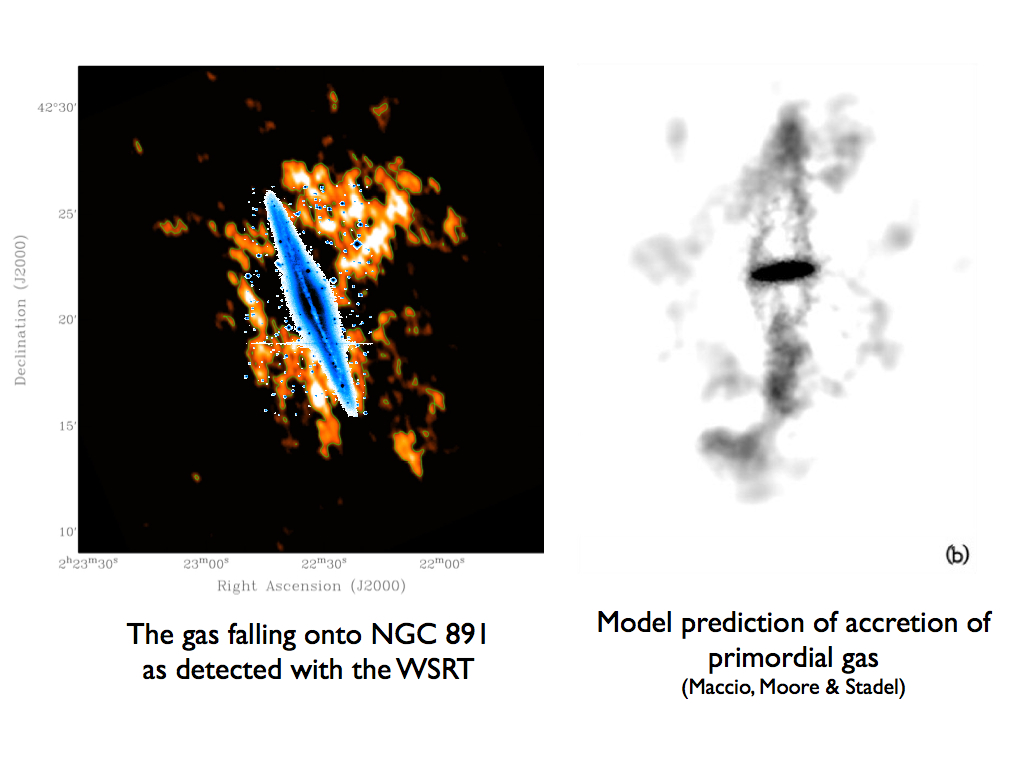Daily Image
05-06-2007Cosmic drizzle
| Submitter: | Tom Oosterloo |
| Description: | If you would lump all stars, gas and dust seen in galaxies together, you would have only 1/3 of all normal matter in the Universe*. The other 2/3 is in warm and hot, primordial gas floating in the large space between galaxies. There has to be a continuous "drizzle" of this intergalactic material onto galaxies because otherwise all galaxies would have no gas: normally, gas clouds in galaxies collapse to form stars and if there would not be a continuous supply of new gas, all gas in galaxies would have been turned into stars by now. The big problem is, however, that the infalling clouds are probably quite small and extremely difficult to observe. Since its last upgrade, the WSRT is one of the best instruments to try to detect this cosmic infall. Using very deep WSRT observations (staring at the same spot on the sky for 20 nights!!!), a large halo of gas has been found surrounding the nearby galaxy NGC 891. Most likely this is one of the first detections of the accretion of primordial gas from outer space. The picture on the left shows the galaxy (blue) with the halo of gas (orange) as detected with the WSRT. The picture on the right is taken from a model calculation predicting what this accreting gas typically should look like. More details in " The cold gaseous halo of NGC 891", Oosterloo, Fraternali & Sancisi, http://xxx.lanl.gov/abs/0705.4034 (to appear in The Astronomical Journal) *: you would have only about one percent of "everything" if you include the illustrious dark matter and dark energy that we know exists but have no clue what it is... |
| Copyright: | Oosterloo & Fraternali |
| Tweet |  |
